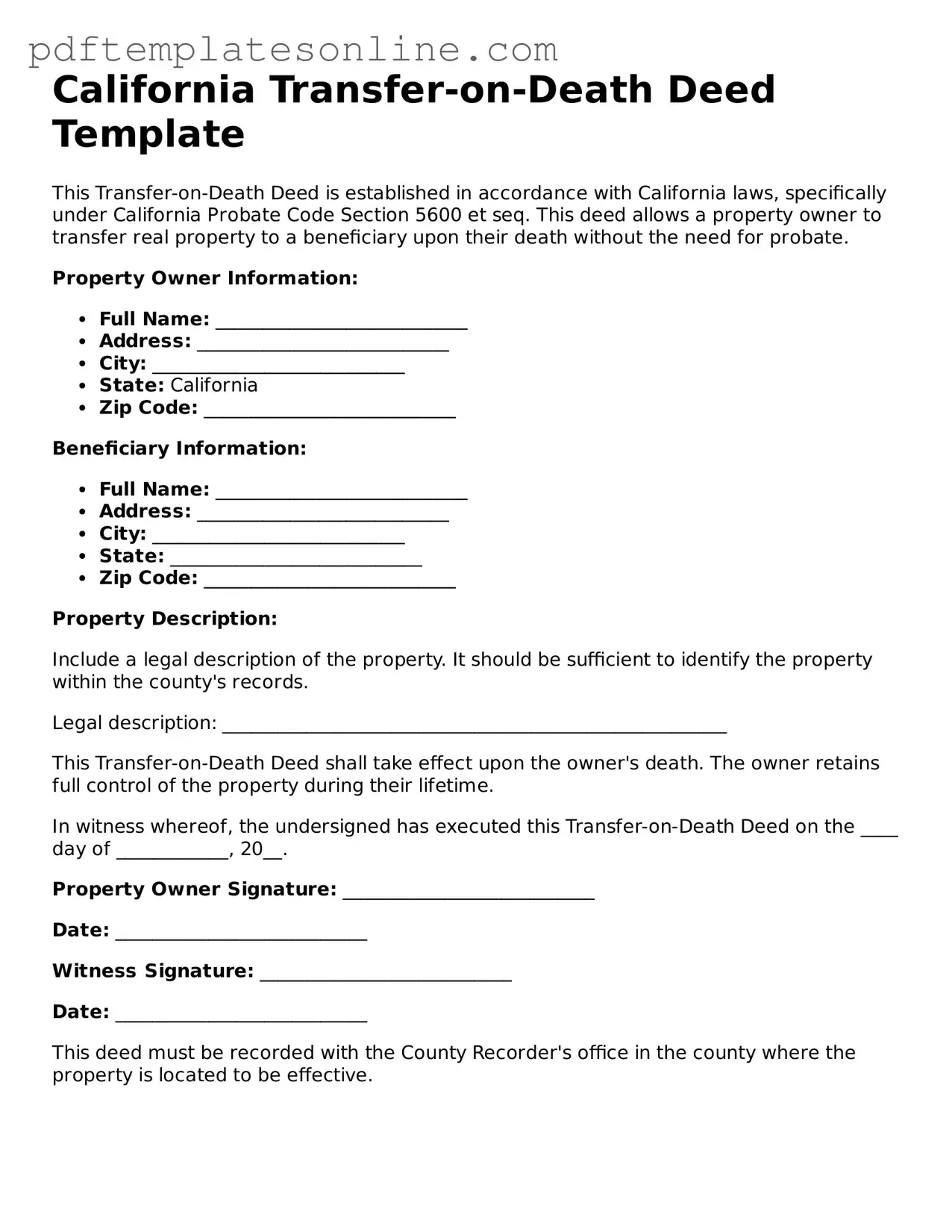Official California Transfer-on-Death Deed Document
The California Transfer-on-Death Deed form is a legal document that allows property owners to transfer their real estate to designated beneficiaries upon their death, without the need for probate. This form simplifies the estate planning process and provides a straightforward way to ensure that property is passed on according to the owner's wishes. By utilizing this deed, individuals can maintain control over their property during their lifetime while facilitating a smooth transition for their heirs.
Access Transfer-on-Death Deed Editor Now
